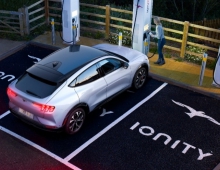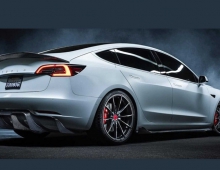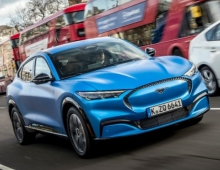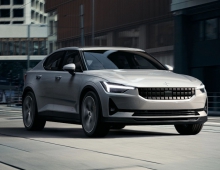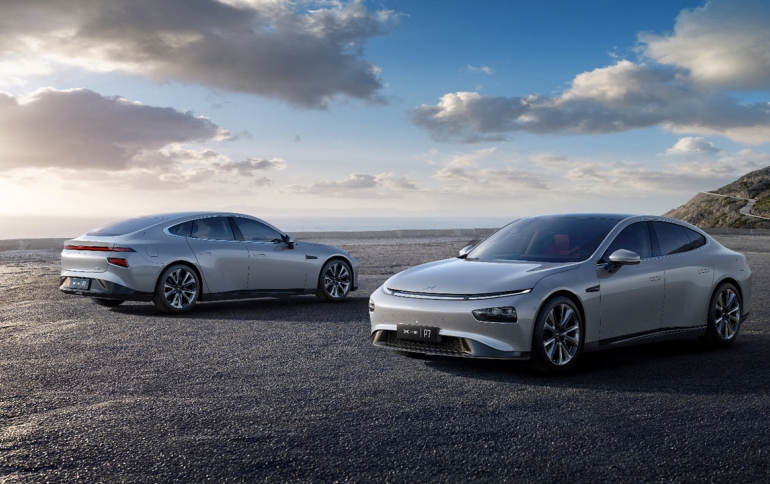
China’s Xpeng P7 EV Has a 706km Range - Longer Than Tesla’s Model 3
China's Xpeng Motors unveiled the P7, an electric car that will compete against Tesla Inc.’s Model 3 in China by offering a longer range and cheaper price.
The P7 sedan will have a maximum range of 706 kilometers (440 miles) per charge and cost 254,900 yuan ($36,000) after subsidies when it becomes available in September, the company said. By comparison, the longer-range version of the Model 3 that’s expected to be available in China in June will be able to run 650 kilometers on one charge and sell for 344,050 yuan.
The EV sports sedan is available for order in China, in 3 versions and 8 configurations, with customer deliveries will commence by the end June 2020, according to the company.
“Today is a milestone in the 5-year history of Xpeng Motors,” said He Xiaopeng, Chairman & CEO. “The P7’s launch solidifies Xpeng Motors’ leading position in China’s smart EV market. Our ability to launch the P7 in the challenging conditions of the COVID-19 crisis is a testament to the strength of our young company.”
The Xpeng P7 is the first L3 autonomy-ready production vehicle in the Chinese market. It boasts NEDC 706km super-long driving range and 4.3s 1-100km/h acceleration in some configurations. It is the first production model in any market worldwide powered by NVIDIA’s DRIVE AGX Xavier system-on-a-chip, which delivers 30 TOPS (trillions of operations per second) performance and consumes just 30 watts of power.
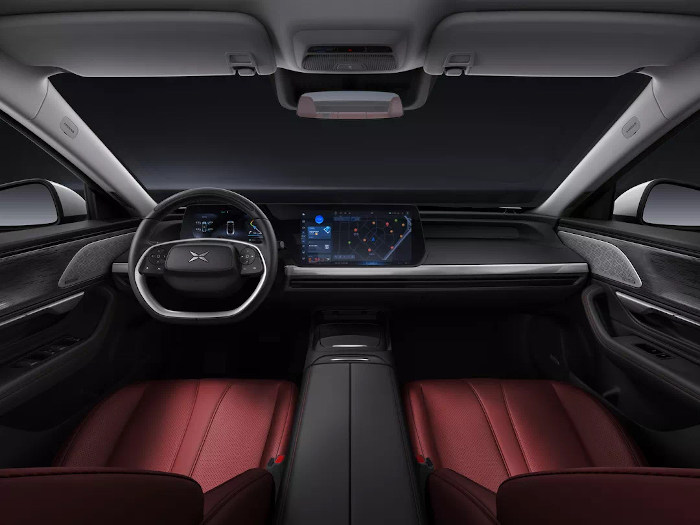

The EV features a high-performance 3-in-1 electric drive system with world-class motor energy density of 2.0 kW/kg and an efficiency up to 97.5%. It is also the
world’s first EV with Infineon 950 IGBT module, delivering up to 580A to the motor for a continuous 40s.
The vehicle uses a Bosch / Brembo braking system, a new-gen Bosch iBooster braking recycling, c.100% energy recovery, with a 35m 100km/h brake distance.
Its autonomous driving system XPILOT3.0 features 12 ultrasonic sensors, 5 millimeter-wave radars and 14 cameras, to complete a 360° multi-perception integrated system.
Other features include a Qualcomm Snapdragon 820 high-performance auto chip running Xpeng Xmart OS 2.0 intelligent full-scenario voice interactive system, which is integrating App stores and Alipay.
- It supports OTA upgrades for in-car apps as well as for the ECU-controlled functions, supported by its SEPA (Smart Electric Platform Architecture).
- The vehicle is powered by a CATL high-density slim-profile prismatic battery pack, (110mm height, 80.9kWh) with an energy density of up to 170Wh/kg.
- The battery pack will charge from 30% to its 80% of its capacity in 28 mins, and will offer a 120km range after a 10-minute charge. It also supports China’s first remotely-controlled concealed charging plug.
- Last but not least, the vehicle has a 5-level safety design: Passive, battery, active, air quality and data security measures.
Powered by NVIDIA's DRIVE Xavier, the P7 operates both the XPILOT3.0 and XPILOT2.0 systems concurrently to provide complete redundancy. The safety framework is designed and benchmarked to C-NCAP 5-star standards.
The P7’s multiple front-facing, side and rear-facing cameras cover a 180°-degree+ field of view, following tight curves and recognizing vehicles cutting in at close quarters. The P7 is equipped with the first new-generation forward-looking millimeter wave radar sensors, with detection distance over 200 meters, offering market-leading accuracy and angle of view, effectively penetrating rain, fog, haze to perceive surroundings in reduced visibility conditions. Four more high-performance millimeter wave radars are positioned at each corner of the P7.
The P7’s lane-level positioning function is backed by AutoNavi’s high-definition high-precision maps. The GPS/RTK/IMU positioning hardware allows positioning accuracy to the centimeter level, or less than 0.3% thanks to real-time positioning map construction technology (SLAM). These complementary features effectively enhance the stability and safety of the P7’s autonomous driving function on overpasses, in tunnels or under bad weather conditions. Coupled with the precise control capabilities brought by Bosch iBooster, the P7 performs a suite of advanced ADAS functions, including navigation-guided pilot (NGP) for highways, traffic light recognition assistance and the first production model to feature memory parking for car parks.
The car's bodywork is crafted with a minimalist profile that lowers air resistance to a market-leading Cd0.236, delivering longer range and a quieter, smoother ride.
The intelligent cockpit is designed to interact with driver and passengers through voice commands, infotainment, and a concert hall-standard 600w Dynaudio surround-sound audio environment. A panoramic glass roof, frameless doors, and a low-profile console offer wide-angle views in all directions. Nappa leather styling is available for an extra touch of luxury.
The P7 will be available through Xpeng’s growing sales network, already some 113 outlets across 57 cities, and its service network of 73 stores in 52 cities. Supercharging stations for the P7 have already reached 164 contracted and signed units across 35 cities, while its supporting 3rd-party charging pile networks number some 200,000+ units across China.
The Xpeng P7 is available in China in various configurations, starting from RMB 229,900 – 349,900 (US$32,462 – 49,404) post subsidies.
- 4WD High Performance (4.3s 0-100km/h acceleration): RMB 339,900 – 349,900
- RWD Super-Long Range: (656km – 706km NEDC): RMB 254,900 – 276,900
- RWD Long Range (568km NEDC) RMB 229,900 – 259,900


